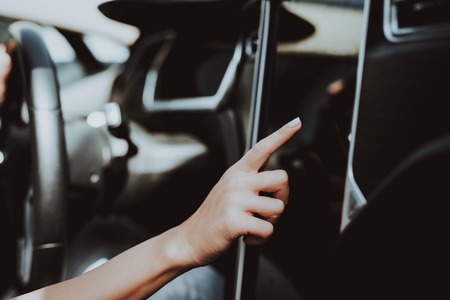Overview of the UK Driving Licence Process
Obtaining a UK driving licence is a step-by-step journey that ensures all drivers meet strict safety and competency standards. The process begins with applying for a provisional driving licence, which allows you to start learning to drive on public roads under certain conditions. Once you have your provisional licence, you must prepare for and pass the theory test, which assesses your understanding of road rules and hazard perception. After successfully completing the theory test, you can book and take your practical driving test, where an examiner evaluates your driving skills in real-world scenarios. Upon passing the practical test, you will be awarded a full UK driving licence, granting you the legal right to drive unaccompanied. Each stage has its own requirements and recommended preparation methods, ensuring that all new drivers are fully equipped for safe and responsible motoring across the UK.
2. Eligibility and Application Requirements
Understanding who can apply for a UK driving licence and what is needed during the application process is crucial. Below, our experts provide a detailed breakdown of age restrictions, residency requirements, essential documents, and practical advice to ensure your initial application goes smoothly.
Age Restrictions
| Vehicle Category | Minimum Age |
|---|---|
| Car (Category B) | 17 years old |
| Motorcycle (Category A1/A2/A) | 16–24 years old (varies by category) |
| Lorry/Bus (Category C/D) | 18 years old* |
*Some exceptions apply for certain professional training schemes.
Residency Conditions
- You must normally reside in Great Britain (England, Scotland, or Wales).
- EU/EEA nationals living in the UK can apply under specific conditions.
- You need to have lived in the UK for at least 185 days in the past 12 months before applying.
Necessary Documentation
- Proof of identity: Valid passport or UK biometric residence permit.
- Proof of address: Utility bill, council tax statement, or bank statement dated within the last three months.
- National Insurance number: Often required on application forms.
- A passport-style colour photo: Must meet DVLA specifications if not applying online with a valid UK passport.
- D1 application form: Available from most Post Offices or online via DVLA.
- Application fee: Payable by debit/credit card, cheque, or postal order depending on application method.
Top Tips from Experts
- Double-check your documents: Any discrepancies in names or addresses can delay your application.
- If you wear glasses or contact lenses, ensure you meet the minimum eyesight requirements before applying.
- Apply online if possible: The process is typically faster and reduces paperwork errors.
- If you have any medical conditions, check the DVLA guidelines to determine if you need to declare them during your application.
Your First Steps Checklist
- Confirm eligibility based on age and residency status.
- Gather all necessary documents before starting your application.
- Select your preferred method: online or by post.
- Carefully complete all sections of the D1 form if applying by post.
- Submit your application and keep a record of your reference number for tracking purposes.
![]()
3. Theory and Practical Tests Explained
Understanding the UK driving licence process can be daunting, especially when it comes to the theory and practical tests. Below, our experts break down what you need to know, from booking your assessments to acing them on test day.
Booking Your Driving Tests
Before you can get behind the wheel for your practical test, youll need to pass the theory test. You can book both tests online through the official GOV.UK website or by phone. Remember, there are often waiting lists—especially in busy areas—so its wise to book well in advance. Always double-check your provisional licence details before booking to avoid delays.
Preparing for the Theory Test
The theory test covers essential topics like road signs, highway code rules, and hazard perception. Many learners ask how best to prepare; seasoned instructors recommend using official DVSA practice materials and apps. Regular mock tests help identify weak spots, while interactive hazard perception clips build real-world awareness. Don’t forget: bringing valid photo ID and your provisional licence to the test centre is mandatory.
Insider Tips for Passing the Theory Test
Most candidates find the multiple-choice section straightforward but stumble on hazard perception. Experts suggest practising with a variety of video scenarios and reviewing each mistake carefully. The pass mark is 43 out of 50 for multiple choice and 44 out of 75 for hazard perception. Arrive early on test day to settle nerves and read every question carefully—rushing is a common cause of failure.
Navigating the Practical Driving Test
The practical test assesses your ability to drive safely and confidently under real conditions. It lasts about 40 minutes and includes independent driving, manoeuvres (like parallel parking), and responding to traffic signs. Booking slots fill up quickly, so flexibility with location and timing can help secure an earlier date.
Expert Advice for Success on Test Day
On the day of your test, bring both parts of your provisional licence and arrive at least 15 minutes early. Examiners aren’t looking for perfection—they want to see safe, responsible driving. Common questions include whether one minor fault means automatic failure (it doesn’t; up to 15 minors are allowed) and if you can use your own car (yes, provided it meets DVSA standards). Practise in varied weather conditions and routes near your chosen test centre for best results.
Frequently Asked Questions
Q: Can I retake the tests if I fail?
A: Yes, there’s no limit on attempts, but you must wait at least three working days before rebooking the theory test and ten working days for the practical.
Q: Are there extra support options available?
A: Absolutely! Candidates with special needs can request additional time or oral language support when booking.
Q: What’s the most common reason people fail?
A: For theory, not enough preparation; for practical, poor observation at junctions tops the list.
With thorough preparation and these expert-backed insights, youll be well-equipped to tackle both tests and move one step closer to earning your full UK driving licence.
4. Provisional Licence and Learner Driver Rules
Holding a provisional driving licence in the UK is your first step towards becoming a fully licensed driver, but there are specific rules and limitations attached to this stage. Here, our experts clarify what you can and cannot do with a provisional licence, along with essential legal requirements for both learners and their supervisors.
What You Can Do With a Provisional Licence
- Learn to drive a car on public roads (excluding motorways unless accompanied by an approved instructor in a dual-controlled car)
- Display ‘L’ plates (or ‘D’ plates in Wales) clearly on the front and back of your vehicle
- Practise driving as often as you like, provided all legal conditions are met
What You Cannot Do With a Provisional Licence
- Drive unaccompanied under any circumstances
- Drive on the motorway unless supervised by an approved driving instructor in a dual-controlled vehicle
- Carry passengers for payment or drive professionally
- Tow a trailer (unless you are learning with a qualified instructor who meets additional requirements)
Legal Requirements for Learners and Supervisors
| Requirement | Learner Driver | Supervisor |
|---|---|---|
| Minimum Age | 17 years (16 for mopeds) | 21 years |
| Licence Held | Provisional UK licence | Full UK licence (for at least 3 years) |
| Insurance | Must be insured to drive the vehicle as a learner | N/A (but must ensure learner is insured) |
| Sobriety | No alcohol/drugs permitted above legal limit | No alcohol/drugs permitted above legal limit; must be fit to supervise |
| L Plates Displayed? | Yes, at all times when driving | N/A (responsibility to check) |
| MOT & Road Tax Compliance | Vehicle must be roadworthy, taxed, MOT’d if required | N/A (responsibility to check) |
Additional Guidance for Learners and Supervisors
- Learners should always practise in varied traffic conditions and different times of day to build confidence and experience.
- If using a family member or friend as supervisor, ensure they meet all legal criteria and take their supervisory role seriously.
- Avoid distractions—supervisors should not use mobile phones or become inattentive while overseeing a learner driver.
- If unsure about insurance cover or vehicle compliance, double-check with your provider before heading out on the road.
Expert Tip:
The transition from provisional to full licence is smoother if you keep detailed records of your practice sessions, including routes, conditions, and skills covered. This helps identify areas for improvement before taking your practical test.
5. Upgrading, Renewing, and Replacing Your Licence
How do I upgrade from a provisional to a full UK driving licence?
Once you’ve passed both your theory and practical driving tests, upgrading your provisional licence to a full UK driving licence is straightforward. The DVLA (Driver and Vehicle Licensing Agency) will usually receive notification of your pass from the test centre. You’ll either hand over your provisional photocard at the test centre or be instructed to send it to the DVLA. Within three weeks, your full licence should arrive by post. If you haven’t received it after this period, contact the DVLA for an update.
What’s the process for renewing my UK driving licence?
In the UK, photocard driving licences must be renewed every 10 years until you turn 70; after that, renewals are required every three years. The DVLA typically sends a renewal reminder before your licence expires. You can renew online via the official GOV.UK website, by post, or at certain Post Office branches. Make sure your photo is up-to-date—using an out-of-date photo could result in a fine of up to £1,000 if stopped by police.
How do I update details on my licence?
If your personal details change (such as name or address), you’re legally required to inform the DVLA and update your driving licence accordingly. You can do this free of charge online or by post. Failing to keep your details current could result in fines and issues with insurance claims.
What should I do if my licence is lost, stolen, or damaged?
If your driving licence is lost, stolen, or damaged, report it immediately and apply for a replacement via the GOV.UK portal or by post. If you believe your licence was stolen, report it to the police as well as the DVLA. Replacement fees apply (typically around £20). While waiting for your new licence, you may still drive if you aren’t disqualified and have applied for a replacement—but always check the latest rules on the GOV.UK site.
Expert tip:
Always check that all information on your new or replacement licence is accurate upon receipt. Mistakes can cause problems when hiring cars abroad or dealing with insurers. For peace of mind, keep a digital copy of your driving licence details somewhere secure.
6. Driving in the UK as a Foreigner or Expat
Understanding Your Rights as a Non-UK Resident
If you’re new to the UK, navigating the driving licence process can be confusing. The rules depend on your country of origin and how long you plan to stay. As an expert tip: always check official government sources for the most up-to-date information before you hit the road.
Using Your Foreign Licence in the UK
Most visitors and recent arrivals are allowed to drive using their valid foreign driving licence for up to 12 months from the date they become resident in Great Britain. This applies to both tourists and expats, but with some key distinctions:
- EU/EEA Licence Holders: You can use your EU or EEA licence until you turn 70, or for three years after becoming a resident, whichever is longer.
- Designated Countries: If your licence was issued by a ‘designated country’ (such as Australia, Canada, Japan, South Africa, and several others), you may drive for up to 12 months. After that period, you must exchange it for a UK licence without taking another test.
- Other International Licences: If your licence is from outside the EU/EEA or designated countries, you can still drive for 12 months, but after that you’ll need to apply for a provisional UK licence and pass both theory and practical tests.
The Licence Conversion Process
Converting (or exchanging) your foreign licence is straightforward if you qualify. Here’s what to expect:
- Check if your country is eligible for direct exchange via the official GOV.UK portal.
- Complete form D1 (available at post offices) and submit it with your original driving licence and supporting documents.
- Pay the appropriate fee (typically £43 as of 2024).
If you cannot exchange your licence, prepare to take a UK theory test followed by a practical driving test.
Timeline: How Long Does It Take?
The processing time for exchanging a foreign driving licence usually ranges from three to six weeks. If you’re required to start from scratch (i.e., applying for a provisional licence and passing all tests), expect the process to take several months—especially considering waiting times for test slots in busier regions like London or Manchester.
Expert Advice: Start Early
If you plan on staying in the UK beyond one year, begin your conversion process well before your initial 12-month period expires. Being proactive avoids legal complications and ensures continuous motoring freedom. And remember: driving without a valid licence in the UK can lead to fines, points on your record, or even prosecution—so don’t cut corners!
7. Common Issues and Troubleshooting
Expert Responses to Typical Problems
Even with careful preparation, many applicants encounter stumbling blocks during the UK driving licence process. Below, our experts address some of the most frequently reported issues and offer practical solutions.
Delays in Licence Processing
Delays are a common frustration, particularly during peak application periods or after submitting paper documents. If your licence hasn’t arrived within the DVLA’s stated timeframe (usually three weeks), check your application status online or contact the DVLA by phone. Always keep copies of any forms and correspondence you’ve sent. For urgent cases—such as needing your licence for work—explain your situation clearly when contacting the DVLA, as they may be able to expedite your application.
Test Failures: What Next?
If you fail either the theory or practical test, don’t be discouraged—it’s a common part of the process. Review your feedback report to identify areas for improvement. There’s a mandatory waiting period before rebooking: three working days for the theory test, and ten working days for the practical test. Consider extra lessons or mock tests with an approved instructor to boost your confidence and skills before your next attempt.
Name Changes and Address Updates
If you change your name or address, it’s vital to update your driving licence promptly to avoid fines. Use the official DVLA online portal or send a D1 form by post for changes. Name changes will require supporting documents such as a marriage certificate or deed poll. Address updates are free and can be done quickly online.
Appeals and Disputes
If you believe a test result was unfair or there was an administrative error, you have the right to appeal. Appeals must be lodged with the magistrates’ court within six months of the decision, and it’s advisable to seek legal guidance. For disputes about medical fitness to drive, you can request an independent review by contacting the DVLA Medical Group.
Contacting the DVLA Effectively
The DVLA is best contacted via their official website or helpline for most queries. For sensitive matters or if you require a written record, use their secure online message service or send correspondence via recorded post. During busy times, patience is key—keep notes of all communications, including dates and names of representatives spoken to.
Top Tip from Experts:
Always use official channels and beware of third-party websites that charge unnecessary fees for processing simple tasks like renewals or address changes. Staying organised and proactive will help resolve most issues swiftly.


